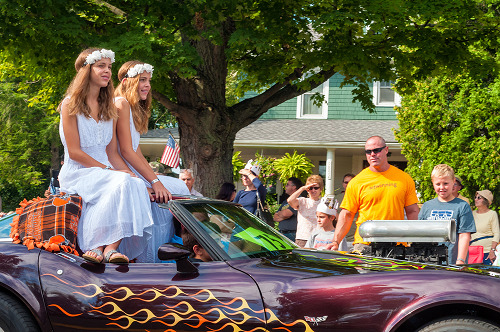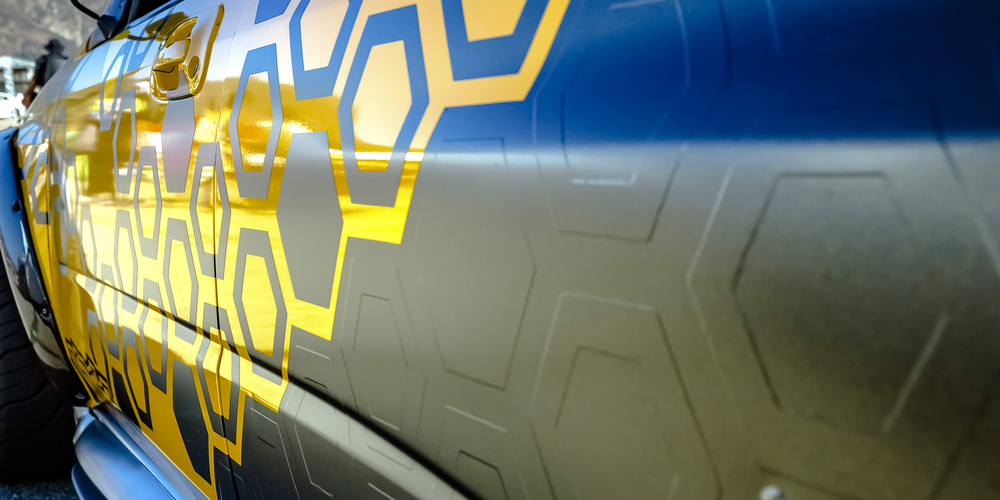Decals are a fun way to showcase your personality. Customized car decals allow you to take pictures from your phone and place them onto your treasured possession, your car.
Getting a custom decal lets you get a credible and consistent look that gets you noticed anywhere, anytime.
The following article details every piece of information you’ll need to know about custom car decals. Read on to learn more.
What is a decal

A decal is a cloth, plastic, or paper with a printed pattern or image on it. The design is made to be transferable to another surface and is usually done with water or heat. The decal technique was created and popularized by Simon François Ravenet in the 19th century.
A decal is typically made of four layers from top to bottom. The first layer consists of a film face stock. The top layer makes up the top side of the label stock. The second layer is the adhesive layer, which is applied to the bottom of the face stock.
The third layer consists of a release coating layer or a silicon film applied to the backing material’s top side. The last layer is a film liner or paper, which provides the label stock’s last layer. There are two common types of decals, called the vinyl peel-and-stick and the water-dip or water-slide.
The water-dip decal is a screen printed on a coating of water-soluble glue on moisture-resistant paper. The decal has to be dipped in water before it’s applied. When the material comes into contact with water, the glue loosens, and the decal is removed from its backing.
The vinyl peel-and-stick decal is more of a sticker than a decal. It, however, has an adhesive backing that is transferable by peeling off the base.
How to apply decals
If you are applying the decal by yourself, you can follow these steps to ensure that you get the most out of your design.
-
- Clean the car surface or area where you want to apply the decal
- Mix dish liquid and warm water, then place on the surface.
- Peel the decals backing and place the pattern on the wet area.
- The last step is to smoothen the pattern to work out any bubbles or liquid that might have been left on the area. You’ll need to use a straight surface or a squeegee and work from the center out for this step.
If you are afraid of peeling your car’s paint job when placing the decal, you should go for a decal with transparent polyacrylate. The substance doesn’t corrode the car’s paint and peels off smoothly. Decals with polymeric calendared vinyl are also a great option. This is because they have a unique air release lining that reduces wrinkling and allows for smooth removal.
Things to Note
Car decals are a matter of personal preference and have nothing to do with the pattern. However, there are a few things you need to remember when applying custom car decals on your vehicle.
-
- If your vehicle has been freshly painted, it is recommended that you give the paint a 30-day grace period before going ahead with the decal application.
- It is also always advisable to go with a decal with stark color contrast to your car. The difference will be more noticeable, and you will stand out more.
- If you’re going for a car window decal, don’t place the pattern on your windshield or side mirrors. The print will end up blocking your view.
- Although most car decals can be reapplied and repositioned, experts advise against regularly removing them and moving them. Repurposing and repositioning can cause dust and debris to build on the decal’s cling side, making the adhesive loose and causing bubbles to appear.
UV Protection & Weather Resistance: Why It Matters
If you’re investing in custom car decals, you want them to last — and that means thinking about UV resistance. Most people don’t realize this, but the sun can actually fade and crack low-quality decals over time. That’s why it’s important to choose UV-protected vinyl or laminated decals built to withstand direct sunlight, rain, snow, and extreme temps.
In 2025, more decal makers are offering weatherproof options using cast vinyl materials, which hold up significantly better than cheap calendared ones. It’s a game-changer for those who drive daily or park outdoors often. Want a pro tip? Ask your supplier if they offer overlaminates with UV inhibitors — it’ll seriously extend the life of your design.
Decals vs. Full Wraps: What’s the Better Choice?
Let’s be honest — not everyone wants to go all-in on a full vehicle wrap. That’s where custom car decals shine. They offer a way more affordable and flexible option compared to full wraps, especially if you’re just looking to make a statement without breaking the bank.
For small business owners or side hustlers, decals are a no-brainer for mobile advertising. You can add your logo, website, or QR code without shelling out thousands on a full wrap. And if you’re into seasonal promotions or events? You can swap out decals way faster and cheaper.
Plus, modern decal technology (yep, even in 2025) lets you get that paint-like finish without the permanence or cost of a wrap.
Eco-Friendly Decal Options: A 2025 Must-Have
Here’s something barely anyone talks about — eco-conscious decal materials. With sustainability on everyone’s mind this year, there are now vinyl alternatives like PVC-free film and recyclable adhesives that don’t harm the environment the way traditional decals might.
Look for suppliers offering Greenguard Gold Certified or eco-solvent printed decals. These options use less harmful chemicals and are safer for both the planet and installers. If you’re big on going green (or just want to align your brand with eco-values), this is an easy upgrade that speaks volumes.
And bonus: These eco-friendly decals are just as durable and eye-catching as their less sustainable counterparts.
TNT Signs for Your Custom Car Decals!
Having a beautiful custom car decal design for your car can give it the appearance you’ve always dreamed of.
If you are in need of a custom car decal with dynamic design, beautiful colors, and longevity, contact TNT Signs in Santa Rosa, CA!



